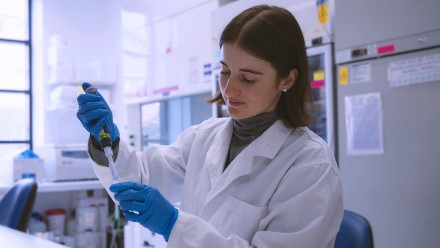Derivative developments
An important derivative product, named 'Pertechnegas' has found applications in diagnosing pathology specifically involving the permeability of the alveolar-capillary membrane. Details of its discovery, properties and clinical application are listed on separate pages.
Careful experimental observations of thin layer chromatography (TLC) strips by the late Rod Browitt from our lab in 1995 identified what he termed a 'Third Species' lying somewhere between Pertechnegas and Technegas. Based on how it arises, we hypothesized that it represents an insoluble oxide of Technetium, but no additional developmental work has been done on it. Nemmar and colleagues in a paper in Circulation (Bibl ref # 199) may have incidentally discovered the 3rd Species in a clinical study, although they claimed, erroneously, that Technegas penetrated the alveolar- capillary membrane. But Nicholas Mills and his colleagues from Edinburgh in the UK published a comprehensive report (PDF 32.27 KB) on 10 volunteers that clearly demonstrates no movement of Technegas into the systemic circulation, a finding that concurs with data we collected as part of the regulatory requirements in 1986. The Swedish Karolinska group has also published a second paper reaffirming Mills findings (Biblio # 235) and further emphasising that the particles are retained in the lungs at least for the measurable lifetime of the radionuclide (~24h).
ThromboTrace®
ThromboTrace® is the name given to a product formed by dispersing Technegas particles in aqueous solutions electrostatically using a device developed by one of our research group, the late Rod Browitt, and termed a Precipitron. The entire activity of the Technegas generator can be transferred to 1mL of injectable liquid such as 5% glucose in a few minutes, autoclaved and on iv injection it has been shown to locate actively developing DVT in humans and experimental PE in rabbits. Details of the preliminary phase 1 clinical trial of this agent were presented at the WFNMB meeting in Berlin in 1998 (bibl. Ref. # 144). The United States patent office granted (December 20, 2005) a patent to the ANU (#6,977,068) for ThromboTrace under the title "Method for detection of fibrin clots", acknowledging the extensive research work by our small team over many years. The priority date was set as July 24, 1997 and the full published patent description contains much of the data and images acquired in our laboratory at the School.
FibrinLite Research
FibrinLite Research is ongoing at the Biomedical Radiochemistry Laboratory, Department of Applied Mathematics, Research School of Physics and Engineering, where a personal Chair has been set up and funded by SirTex Medical Ltd. The appointee is Professor Ross Stephens, who had for many years been running the Browitt Nano-particle Laboratory at the JCSMR. A further development of the original 'ThromboTrace' has led to a new entity patented by the ANU, and named 'FibrinLite'. Professor Stephens and his team have been able to coat the surface of these nanoparticles such that they lodge in the pulmonary capillaries without actually obstructing them, thereby minimising the hazard of the current perfusion imaging agent which acts by micro-embolisation.
Further research in collaboration with Professor Chris Parish and his group at The John Curtin School of medical Research with the 'fibrinLite' marker has now been reported (Biblio ref # 294) “Using a histone-coated colloid of a radiolabelled nanocomposite to track histone biodistribution with imaging techniques, it was found that histones bind avidly in the lungs of rabbits after intravenous injection. Blocking experiments with competing polycations in vivo characterised histone lung binding as dependent on a charge interaction with microvessel polyanions. Pretreatment of rabbits with a specific heparinase confirmed that the lung binding sites consist of heparan sulphate in the endothelial glycocalyx. A range of heparan sulphate analogues was accordingly shown to prevent histone accumulation in the lungs by neutralising histones in blood. These findings provide a rational basis for the design of polyanions that can prevent accumulation of cytotoxic histones in the lungs and thereby intervene at an early key step in the development of acute lung injury”.
Technecoat™
Technecoat™ has now been developed by a British Company, Pharmaceutical Profiles as a product that simply labels inhalable drugs with Technegas to trace the lung distribution and retention of the drugs on inhalation. It looks like being a useful tool in refining parameters relating to lung deposition of different drug formulations. A paper on the work is logged as Bibl Ref #203.
Environmental air quality experiments using Technegas as a marker are being conducted by the Swedish national Air Pollution and Health Effects Program (SNAP). Further details can be found on their website under project # 19.







